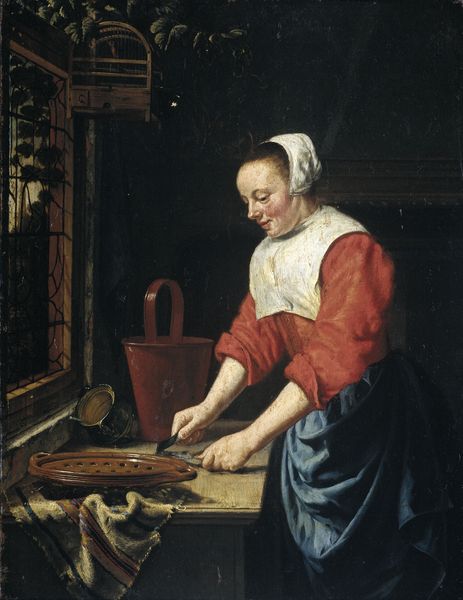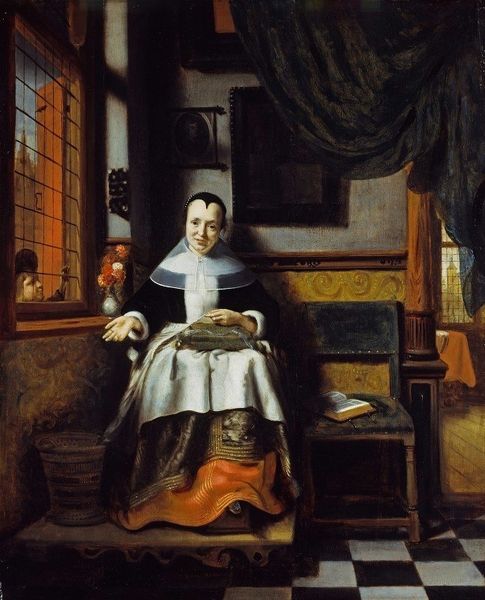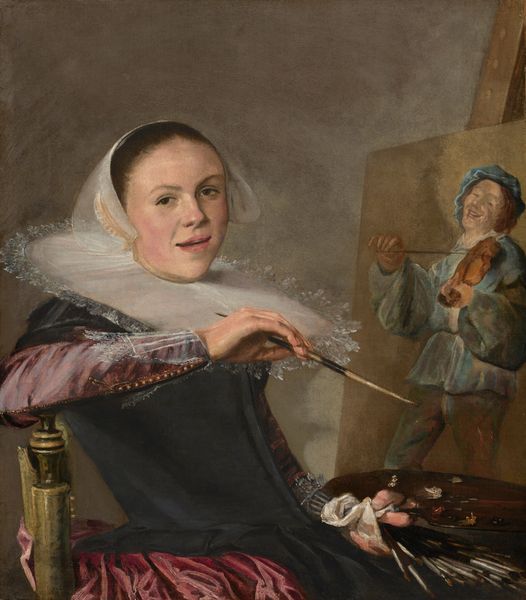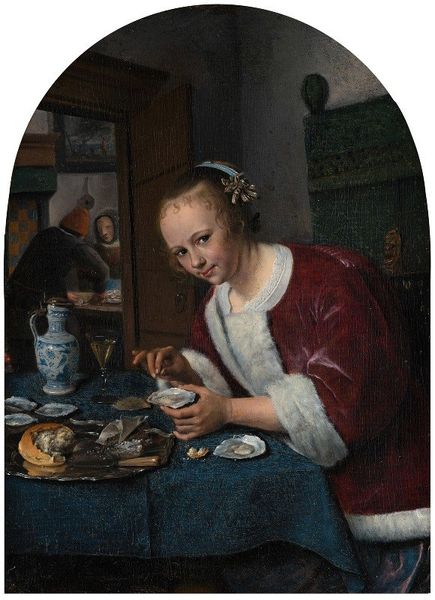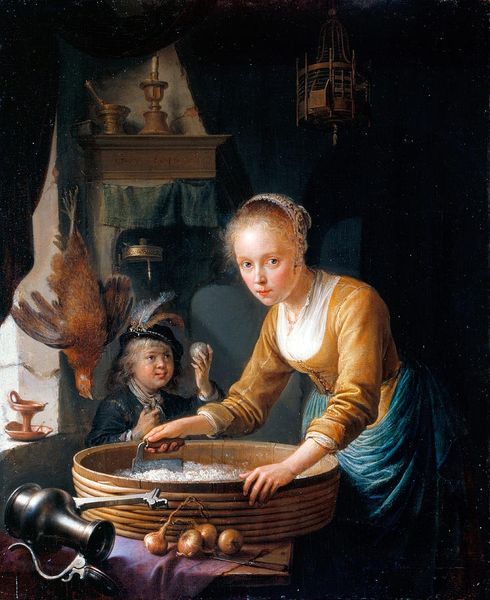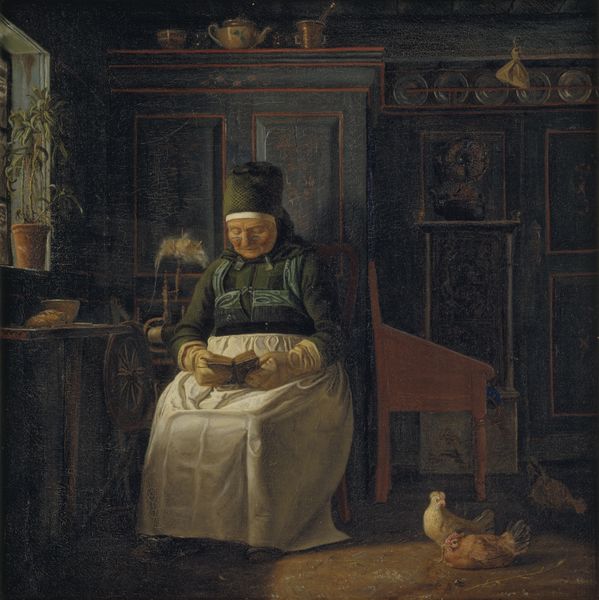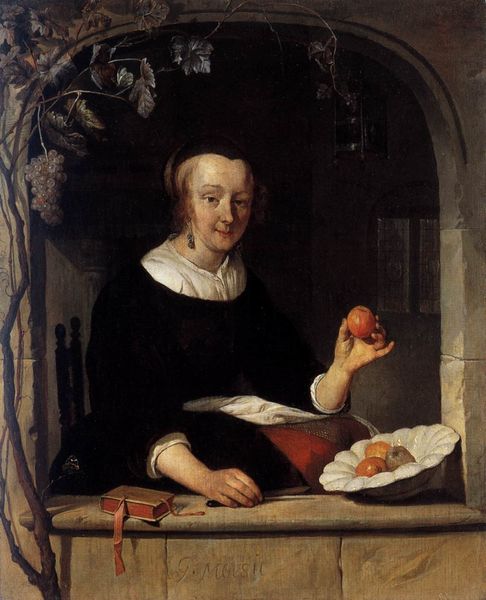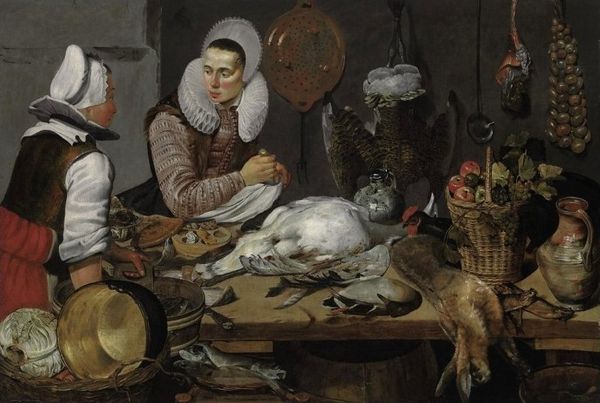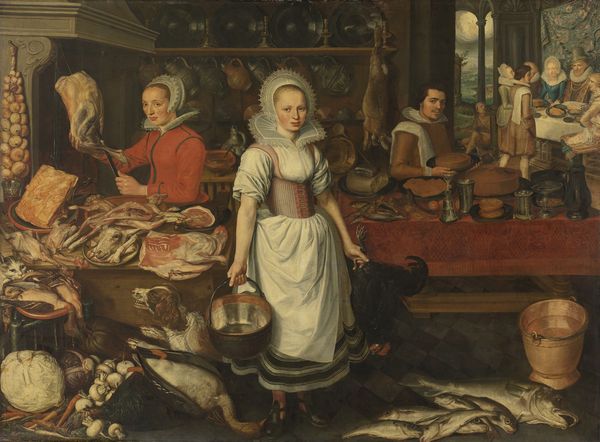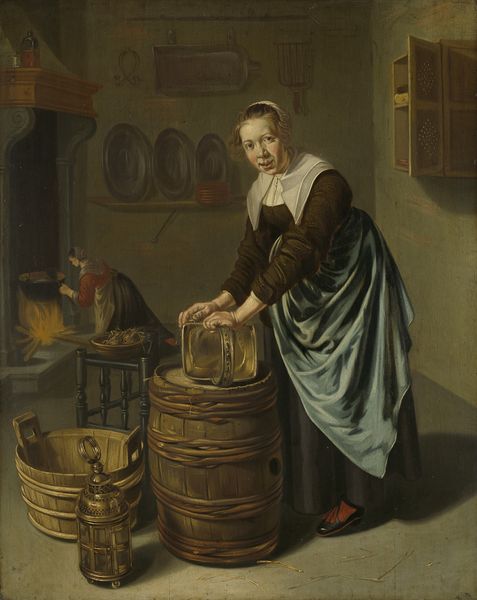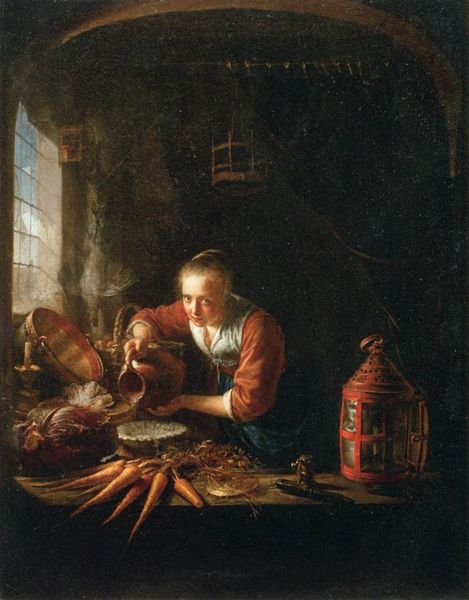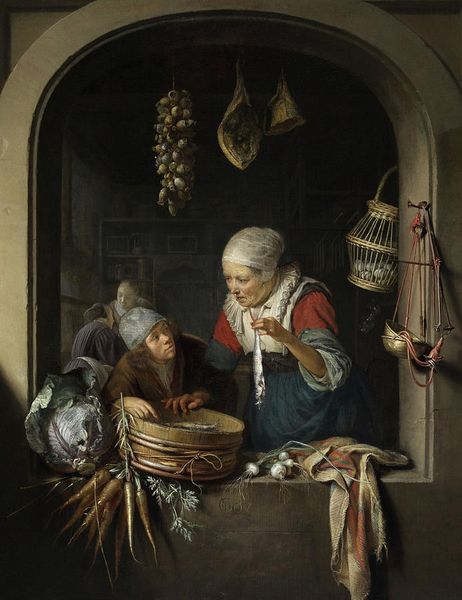
painting, oil-paint
#
portrait
#
baroque
#
dutch-golden-age
#
painting
#
oil-paint
#
figuration
#
genre-painting
#
realism
Dimensions: 33.5 x 27 cm
Copyright: Public domain
Curator: Gabriel Metsu's "Woman Eating," created around 1665, invites us into a domestic scene from the Dutch Golden Age. It's currently housed at the Rijksmuseum. What strikes you first about it? Editor: There's a stillness, a quiet intimacy, despite the array of objects crammed into the space. The light is carefully managed; everything feels both real and posed. It gives the impression that it might reflect the life of common citizens of Amsterdam during the golden age, something which I'm familiar with through history. Curator: Exactly. The scene is rife with symbols. Note the woman herself; the very act of eating was highly symbolic during this period, often linked to ideas of sustenance, mortality, and even the transience of life itself. Consider what is displayed behind her, the furnace, the cat waiting to pounce for a share of food, a killed rooster, and fresh flowers on her table. Editor: And those flowers juxtaposed with the dead fowl really amplify that transience you're pointing out, I agree! The contrast hits me as particularly Dutch: this intense realism bordering on vulgarity right next to refined beauty. What do you see reflected about its historic implications? Curator: Well, look closely at her dress, and the details of her jewelry; this conveys status, an expression of domestic virtues tied into emergent economic prosperity. These domestic paintings reinforced cultural ideas surrounding appropriate behavior. What this meant from a psychological point of view would suggest an expectation that viewers might relate. Editor: So it’s meant to reassure them of their position in this new world, and teach women to behave appropriately? In that sense it reveals as much as it conceals about this historic period, as do cultural items today. This kind of narrative function really illustrates the function that genre paintings had at that time. Curator: Indeed. It shows us both the everyday and the idealized at once, doesn’t it? Editor: It certainly does. A compelling slice of life, skillfully constructed.
Comments
No comments
Be the first to comment and join the conversation on the ultimate creative platform.

